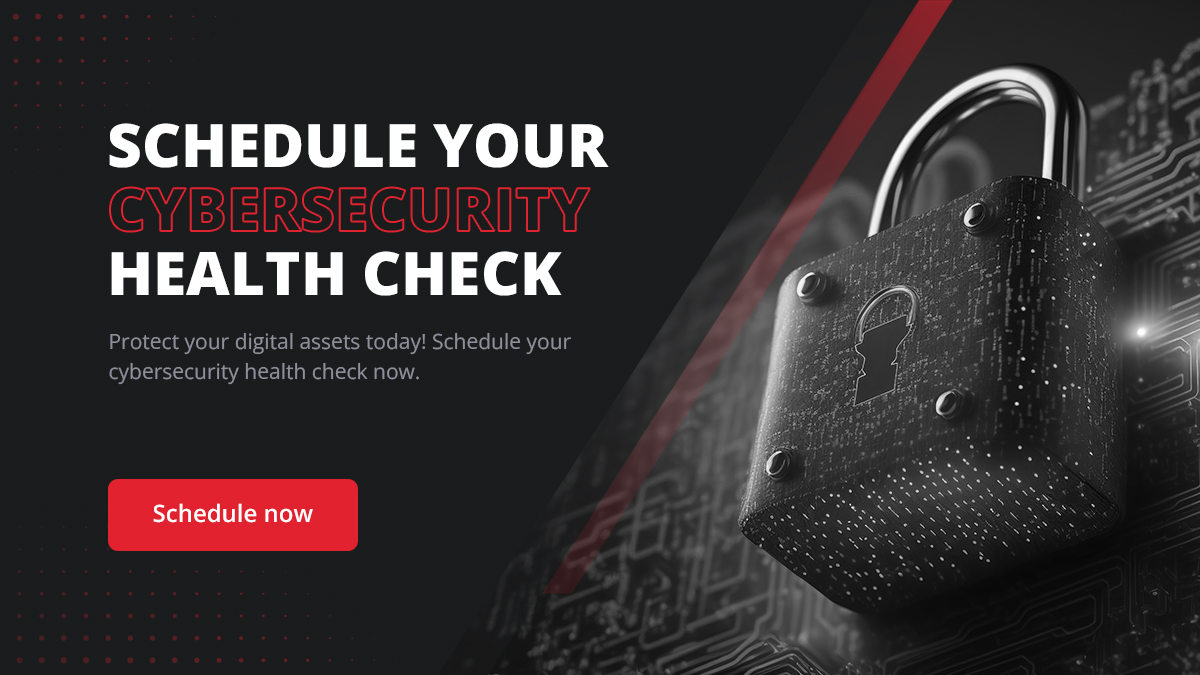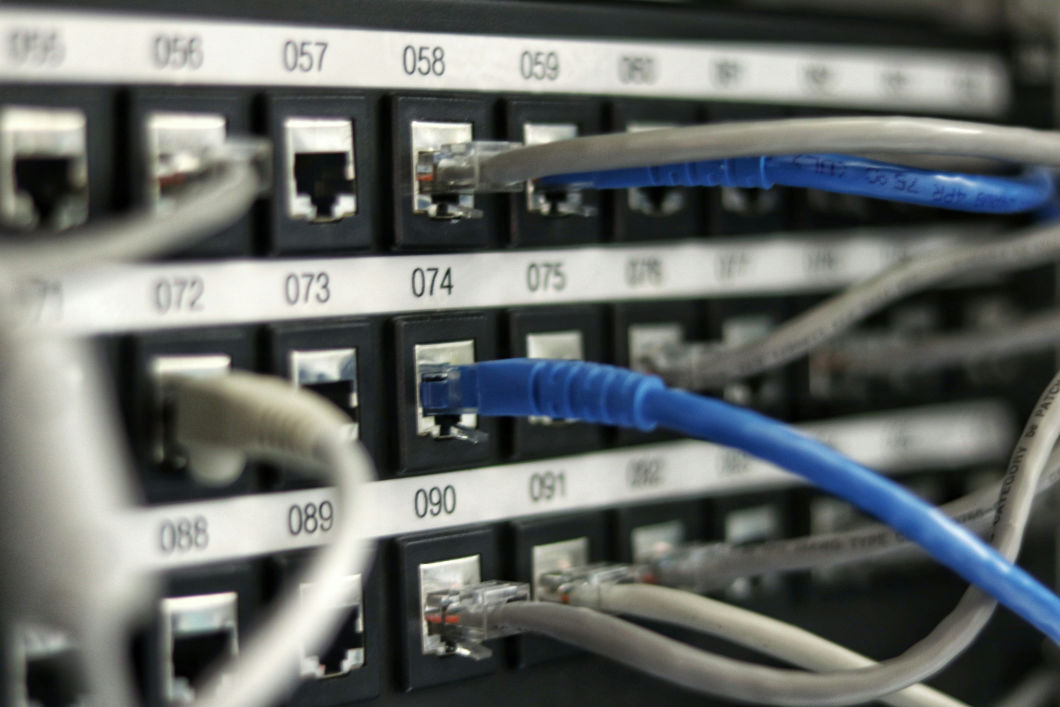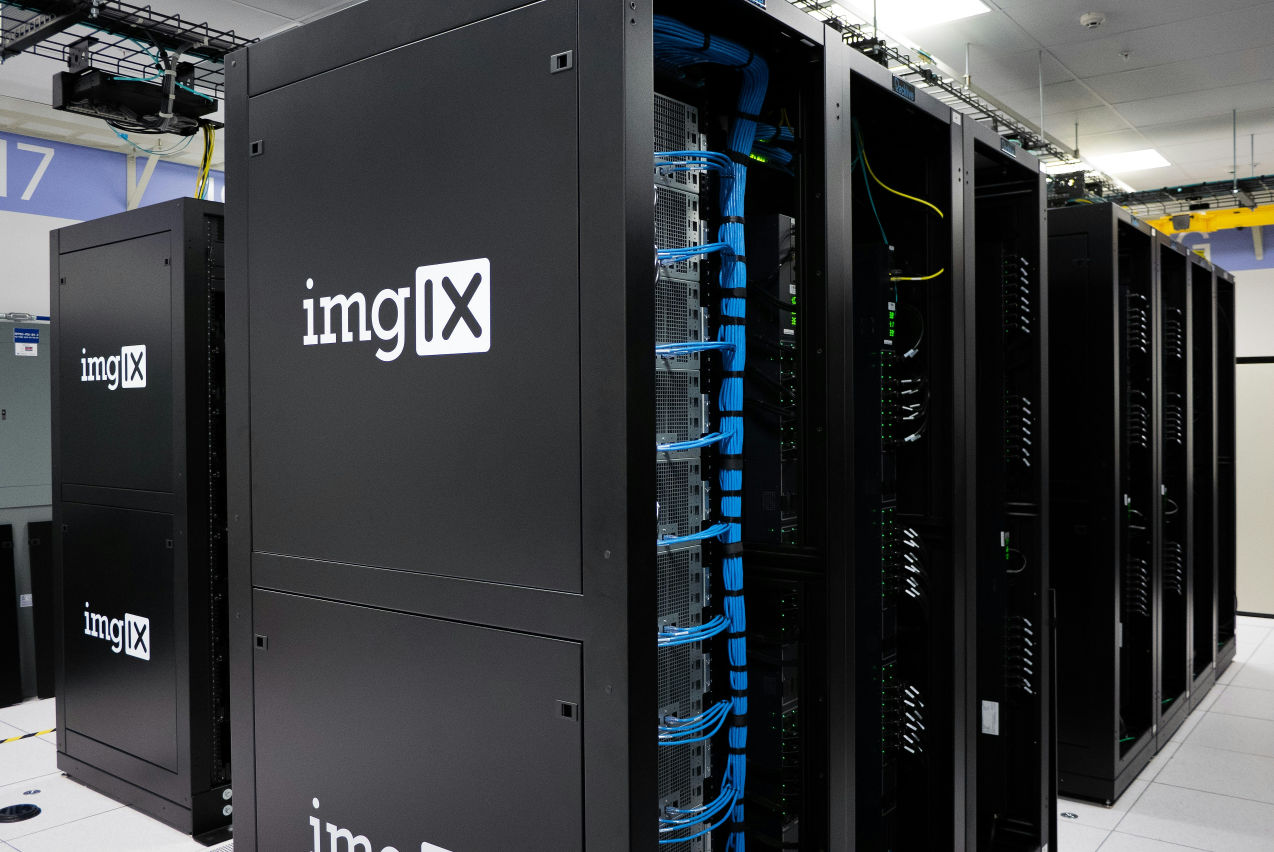Efficient Data Spooling Solutions For Streamlined Operation

What Is Data Spooling?
Data spooling is a fundamental concept in the realm of computing, pivotal for the efficient management and processing of data across various systems. This section delves into the essence of data spooling, elucidating its definition, operational mechanics, and the significant advantages it offers to computing environments.
Definition Of Data Spooling
Data spooling is a process wherein data is temporarily held in an intermediary storage area, often referred to as a spool or buffer, before it is processed or utilized by a device, program, or system. This method is instrumental in orchestrating data flow, ensuring that devices or programs operate without direct synchronization, thus optimizing overall performance and resource utilization.
Overview Of How Data Spooling Works
The mechanics of data spooling are grounded in the principle of decoupling the data production and consumption processes. When data is generated, it is not immediately sent to the intended device or program. Instead, it is queued in a spool, waiting for the opportune moment for processing. This queuing system allows for the orderly handling of requests and data packets, mitigating potential bottlenecks and ensuring smoother data transactions.
In a typical scenario, the spooling system receives data, stores it in the buffer, and then sequentially feeds it to the processing unit or output device. This sequence facilitates a non-blocking data flow, where multiple processes or devices can interact with the spool without causing conflicts or requiring synchronous operations.
Importance And Benefits Of Data Spooling
Data spooling plays a critical role in enhancing the efficiency and reliability of computing systems. Here are some of the core benefits it provides:
- Efficiency Optimization: By buffering data, spooling helps balance the load between fast-producing and slow-consuming processes or devices, thereby optimizing overall system efficiency.
- Resource Management: Spooling allows for better resource allocation, ensuring that processing units or output devices are utilized effectively without idle time or overload.
- System Performance: Spooling improves system performance by handling data asynchronously, minimizing wait times, and speeding up data processing.
- Enhanced Productivity: In work environments, especially where output devices like printers are shared, spooling ensures that jobs are managed orderly, enhancing productivity and reducing wait times.
- Error Handling: Spooling provides a mechanism for better error handling. If a device or process encounters an issue, the data remains in the spool, allowing for retries or corrective actions without losing the data or requiring the source to resend it.
Spooling In Operating Systems
Operating systems are the backbone of computer operations, managing hardware resources and providing essential services for computer programs. One pivotal function they perform is data spooling. This section explores how spooling is integrated into operating systems, enhancing their efficiency and seamlessly managing multiple tasks.
Functionality And Components Of Data Spooling
Data spooling in operating systems is not just a feature but a fundamental component that aids in the smooth execution of processes. Understanding its functionality and components provides insight into its critical role in system operations.
Key Components of Data Spooling:
- Spooler: The spooler is the central component of the spooling process and is responsible for managing the queue of tasks and ensuring data is processed in the correct order.
- Buffer: A buffer temporarily stores data while waiting to be processed or outputted, which is essential for managing data flow and preventing bottlenecks.
- Spool File: This is the file where data is temporarily stored. It's essential for the spooling process, as it holds the data until the system is ready to process it.
Functionality:
- Queue Management: The operating system uses spooling to manage queues effectively, ensuring that tasks are processed in an organized manner based on priority or order of arrival.
- Resource Allocation: Spooling helps in the efficient allocation of resources, ensuring that no single process monopolizes system resources, leading to a more balanced and efficient system performance.
- Intermediary Storage: By serving as an intermediary storage, spooling bridges the speed gap between fast processors and slower input/output devices, ensuring neither is idle unnecessarily.
Spooling's Role in Multitasking:
In the context of multitasking environments, spooling is indispensable. It allows operating systems to handle multiple processes simultaneously, improving overall system utilization and user experience. For instance, while one document is being printed, another can be queued up, ensuring continuous operation without downtime.
Integration with Operating System Components:
Spooling is deeply integrated with various operating system components, such as the scheduler, which determines the order of task processing, and the file system, which manages the storage of spool files. This integration ensures that spooling operates seamlessly, enhancing the system's efficiency and reliability.
Input and Output Data Spooling
Input Data Spooling
Input data spooling refers to the buffering of incoming data before the system or application processes it. This type of spooling is crucial in scenarios where data is received faster than it can be processed or when the processing unit is busy handling other tasks. Here's how input data spooling works and why it's important:

- Buffering: Incoming data is stored in a temporary storage area or buffer and is waiting to be processed. This ensures no data is lost, even when the processing unit is unavailable or overwhelmed.
- Efficiency: By queuing incoming data, systems can handle processes more efficiently, allowing for the sequential processing of tasks without causing bottlenecks or data overflow.
- Prioritization: Input spooling can also involve prioritizing tasks based on predefined criteria, ensuring that critical data is processed first.
- Cybersecurity Implications: From a cybersecurity perspective, input data spooling must be carefully managed to prevent unauthorized access to unprocessed data and to ensure that malicious data doesn't exploit the spooling mechanism.
Output Data Spooling
Conversely, output data spooling deals with storing data temporarily before it's sent to an output device or another system. This is common in printing, where documents are spooled before being printed, but it also applies to data transmission processes. The benefits and operations of output data spooling include:
- Orderly Processing: Output spooling ensures that data is sent to the output device or system in an orderly manner, maintaining the sequence of tasks and preventing data collision.
- Handling Speed Discrepancies: It helps manage the speed differences between the system and the output device, ensuring that the faster system doesn't overwhelm the slower output device.
- Reduced Wait Times: Users or processes that send data for output don't need to wait for the actual output to complete; they can continue with other tasks, enhancing productivity.
- Cybersecurity Considerations: Like input spooling, output data spooling requires stringent security measures to prevent data interception, unauthorized access, and tampering with the spooled data.
Data Spooling in Cyber Security
In the context of cyber security, data spooling is pivotal as it involves the handling, storing, and transmitting potentially sensitive information. The spooling process can encompass various forms of data, including print jobs, email messages, network requests, and more. While spooling facilitates efficiency and orderliness in data processing, it also introduces a set of security concerns that organizations must address to protect their assets and information.
Potential Security Concerns
The security implications of data spooling are multifaceted, stemming from the inherent characteristics of the spooling process. Here, we explore some of the potential security concerns associated with data spooling:
- Unauthorized Access: Since spooled data is temporarily stored, it becomes a target for unauthorized access. If not adequately protected, sensitive information within the spool can be accessed or intercepted by malicious actors.
- Data Integrity Threats: The integrity of spooled data is crucial. There's a risk of data being altered, corrupted, or tampered with while it resides in the spool, leading to potential data breaches or system malfunctions.
- Data Retention and Disposal: Properly managing the lifecycle of spooled data, including its retention and timely disposal, is essential. Failure to securely delete spooled data can lead to unintended data leakage or breaches.
- Insider Threats: The internal nature of spooling processes can sometimes be overlooked, making them susceptible to insider threats. Employees with malicious intent or negligence can exploit the spooling mechanism to access or manipulate sensitive data.
- Compliance and Regulatory Challenges: Organizations must ensure that their data spooling practices comply with relevant laws, regulations, and industry standards, particularly concerning data protection and privacy.
Implementing Safeguards
Mitigating the security risks associated with data spooling requires a comprehensive approach encompassing technical measures, policy enforcement, and ongoing vigilance. Here are some strategies to safeguard spooled data:
- Encryption: Encrypting data while spooled can significantly reduce the risk of unauthorized access or data breaches. Encryption should be robust and in line with industry standards.
- Access Controls: Implement strict access control measures to ensure only authorized personnel can interact with the spooling system or access spooled data.
- Regular Audits and Monitoring: Regular security audits and monitoring spooling activities can help identify and address potential security gaps or suspicious activities.
- Data Lifecycle Management: Establish clear policies for retaining and disposing of spooled data, ensuring that data is not retained beyond its useful life and is securely erased when no longer needed.
- Awareness and Training: Educating employees about the risks associated with data spooling and their roles in maintaining security can help mitigate insider threats and foster a culture of security.
- Compliance Assurance: Stay abreast of relevant regulatory requirements and ensure that data spooling practices comply with legal and industry standards.
What Makes Printers Vulnerable to Spooling Attacks?
Printers, often overlooked as innocuous office equipment, can be a significant weak point in an organization's network due to their interaction with data spooling mechanisms. Here's why printers are particularly susceptible to spooling attacks:
- Persistent Data Storage: Printers with spooling capabilities store data temporarily, making them repositories of potentially sensitive information. If this data isn't adequately secured, it becomes a lucrative target for attackers.
- Network Connectivity: Modern printers are typically connected to networks, making them accessible remotely. This connectivity, while beneficial for user convenience, also opens up avenues for cyber attackers to exploit.
- Complex Operating Systems: Printers now have sophisticated operating systems that support various functionalities, including data spooling. This complexity can introduce vulnerabilities, particularly if the system isn't regularly updated or secured.
- Lack of Awareness: Often, organizations don't perceive printers as potential cyber security threats, leading to lax security practices. This oversight can make printers easy targets for spooling attacks.
- Default Configuration Issues: Many printers have default configurations that might not prioritize security. Attackers can exploit these default settings to gain unauthorized access.
Spooler Service
The spooler service, a critical component in managing print jobs, can be a double-edged sword in terms of security. While facilitating the efficient handling of print and data spooling, it can also be vulnerable if not secured properly.
- Attack Vector: Cyber attackers can target the spooler service as an entry point into a system. Once they gain control over the spooler service, they can manipulate or access spooled data, execute code, or leverage its functionality to escalate privileges.
- Legacy Systems: In some cases, the spooler service in legacy systems may have unpatched vulnerabilities. These can become significant risks, especially if the service has elevated privileges.
- Interception of Data: Since the spooler service handles data during the spooling process, there's a risk of data interception. Attackers could potentially capture sensitive information as it's spooled for printing or processing.
To mitigate these risks, organizations should adopt comprehensive security measures, such as regular updates and patches for printer firmware, stringent access controls, and network segmentation. Additionally, monitoring and auditing the use of the spooler service can help detect and respond to suspicious activities promptly.
How Does a Data Spooling Attack Works?
Data spooling attacks exploit the spooling process, where data is temporarily stored or queued in a system or network before being processed or sent to its destination. By targeting this intermediary stage, attackers can manipulate or intercept data, leading to unauthorized access, data breaches, or further network infiltration. Here's a step-by-step breakdown of how a typical data spooling attack might occur:
- Initial Access: The attacker first needs to gain access to the network or system where the spooling process occurs. This could be achieved through various means such as phishing attack. Phishing attack exploits a vulnerability with the help of compromised credentials to gain access to the network or system.
- Targeting the Spooler: Once inside the network, the attacker targets the spooling mechanism or service. In the context of print spooling, this would involve accessing the print spooler service, which manages print jobs within a network.
- Intercepting or Manipulating Data: With access to the spooler, the attacker can intercept data being sent to the printer or manipulate the data being spooled. This could involve altering documents, stealing sensitive information, or inserting malicious code into spooled files.
- Exploiting the Data: Depending on the attacker's objectives, the intercepted or manipulated data can be used for various purposes. For example, stolen data might be exfiltrated for financial gain, identity theft, or further cyberattacks. Alternatively, manipulated data could be used to cause confusion, disrupt operations, or as a stepping stone for deeper network penetration.
- Maintaining Presence: In some cases, attackers might use their control over the spooling process to maintain a persistent presence within the network, allowing them to execute future attacks or continue monitoring network activity.
- Covering Tracks: To avoid detection, attackers might attempt to erase evidence of their activities, such as logs or altered files, thereby complicating the incident response and investigation process.
Mitigation Strategies
Understanding how data spooling attacks work is the first step in defending against them. Organizations can adopt several strategies to mitigate the risk of such attacks:
- Network Segmentation: By segmenting networks, organizations can limit the reach of an attacker who has gained access to a particular segment, thereby protecting critical systems and data.
- Regular Monitoring and Logging: Monitoring network activity and maintaining logs can help detect unusual patterns or anomalies that may indicate a spooling attack.
- Access Controls: Implementing strict access controls and permissions can prevent unauthorized users from accessing critical systems or performing actions that could lead to a spooling attack.
- Regular Updates and Patches: Ensuring that all systems, especially those involved in spooling processes, are regularly updated and patched can close vulnerabilities that attackers might exploit.
- Employee Training: Educating employees about the risks of phishing and other common attack vectors can reduce the chances of an attacker gaining initial access to the network.
Different Types of Data Spooling Attacks
Data spooling attacks are a nuanced threat in the cybersecurity landscape. They target the temporary storage mechanisms that devices and systems use to manage data processing and transmission. These attacks can vary in their method and target, but they all exploit the vulnerabilities inherent in the spooling process. Understanding the different types of data spooling attacks, such as printer spooling attacks and email spooling, is crucial for cybersecurity professionals to develop effective countermeasures.
Printer Spooling Attack

Printer spooling attacks specifically target the print spooler service, a common feature in many operating systems that manages print jobs by storing them in a buffer until the printer processes them. Here's an overview of how printer spooling attacks occur:
In a printer spooling attack, the attacker aims to exploit vulnerabilities in the print spooler service. They might start by identifying a networked printer with weak security measures or finding a way to access the print spooler service remotely. Once they have access, they can manipulate the print jobs, intercept sensitive information, introduce malicious code, or even use the printer as a pivot point to further infiltrate the network.
The consequences of such an attack can be significant, ranging from data breaches and leaked sensitive information to disruption of services and unauthorized access to the network. The stealthy nature of printer spooling attacks makes them particularly dangerous, as they can go unnoticed for extended periods.
Email Spooling
Email spooling is another form of data spooling attack where the adversary targets the email spooling system, which holds emails temporarily before they are sent or delivered. In this type of attack, the goal is to manipulate or intercept email communication within the spooling system. Here's how email spooling attacks can unfold:
An attacker might exploit vulnerabilities in the email server or use phishing techniques to access the email spooling system. Once inside, they can read, modify, delete, or redirect emails. This could lead to information theft, spreading malware, or conducting phishing attacks from within the trusted network.
Email spooling attacks can undermine the confidentiality and integrity of communication within an organization, leading to a range of issues, from data leaks to targeted insider attacks. Therefore it is important to know how to encrypt your email for security reasons. Like printer spooling attacks, they can be challenging to detect, making it essential for organizations to have robust security measures in place to monitor and protect their email spooling systems.
Man-In-The-Middle (MitM) Attacks
Man-In-The-Middle attacks in the context of data spooling are particularly insidious. These attacks occur when an attacker intercepts communication between two systems that are engaged in the spooling process. The attacker places themselves in the communication pathway, intercepting, altering, or redirecting data without the knowledge of the communicating parties.
In a data spooling context, an attacker might intercept data being sent to a spooling service, such as a printer or a batch processing system, and manipulate the data or inject malicious code. This could lead to data breaches, compromised system integrity, or unauthorized access to sensitive information. The stealthy nature of MitM attacks makes them a formidable challenge, requiring robust encryption, vigilant monitoring, and authentication protocols to mitigate.
Job Spooling in Batch Systems
Job spooling in batch systems is another critical area where spooling attacks can occur. Batch processing systems often use job spooling to queue tasks and manage system resources efficiently. However, this queued data can become a target for attackers.
An attacker might target the job spooling system to alter the queued tasks, insert malicious jobs, or disrupt the orderly processing of tasks. Such an attack could lead to incorrect data processing, unauthorized activities being performed under the guise of legitimate batch jobs, or system resources being monopolized by malicious jobs. Protecting these systems requires careful management of job queues, regular auditing of batch processes, and stringent access controls.
File Spooling Attacks
File spooling attacks target systems where files are temporarily held in a spooling area before being processed or transmitted. In these attacks, an adversary aims to manipulate or access the files within the spooling area.
For instance, an attacker could modify files in a print spooler, alter the output of printed documents, or intercept files in a data transfer spool, gaining access to sensitive information. The potential for damage includes data manipulation, data theft, and the introduction of malware into the spooled files. Defending against file spooling attacks involves securing the spooling areas, monitoring file integrity, and implementing access restrictions.
Privilege Escalation
Privilege escalation attacks in data spooling involve an attacker exploiting the spooling system to gain elevated access and permissions beyond what is initially granted. In many systems, spooling processes, such as print spoolers, operate with high-level privileges to function across various system domains and user accounts. Attackers target these spooling services to escalate their access levels.
For example, if an attacker can manipulate or exploit vulnerabilities within a spooling service, they might gain the same privileges as the service itself. This could allow them to access sensitive areas of the system, modify system configurations, or deploy malicious software, all under the guise of a legitimate service. Such attacks can lead to significant security breaches, making it crucial for organizations to monitor and secure their spooling services diligently.
Remote Code Execution (RCE)
Remote Code Execution attacks in the realm of data spooling are particularly alarming. They occur when an attacker exploits a vulnerability within the spooling system to execute arbitrary code on the target system remotely. This can give the attacker unauthorized access to the system, allowing them to carry out a range of malicious activities.
In the case of RCE attacks targeting data spooling, the attacker might identify a vulnerability in the spooling software or service and inject malicious code into the spooled data. When the system processes this data, the code is executed, potentially giving the attacker control over the system. This level of access can lead to data theft, system disruption, or further network infiltration.
Understanding the Phases of the Spooling Process
The spooling process is a critical component in computing and data management, ensuring efficient interaction between different system components and managing data flow through various stages. This process, particularly significant in environments where devices operate at different speeds or when orderly data processing is essential, comprises distinct phases like queue management and device control. These phases are fundamental to the spooling mechanism, orchestrating how data is stored, managed, and relayed to the appropriate devices or processes.
Queue Management
In the queue management phase, the system organizes and prioritizes tasks or data in a specific sequence, awaiting further action. This organization is crucial for maintaining an orderly and efficient processing flow, ensuring that each piece of data or task is addressed systematically. The queue management phase is foundational, setting the stage for how data will be processed, determining the order of tasks, and preparing the system for subsequent actions. It's the backbone of the spooling process, where decisions are made about the priority and handling of each item in the queue.
Device Control
Following queue management, the device control phase occurs, where the system interacts directly with the hardware or output devices. This phase is about action, translating the preparatory steps taken during queue management into physical outcomes, whether it's printing a document, sending data to a network, or storing information on a disk. Device control is where the spooling process comes to fruition, with the system sending data to the device in an organized and controlled manner, ensuring accurate and timely processing. It's a phase that requires precision, as it involves communicating with hardware, managing protocols, and ensuring that the data is transmitted effectively and accurately.
Background Processing
Background processing is a vital phase in the spooling process, where the actual data handling and execution occur behind the scenes without interrupting the user or primary system operations. This phase allows tasks to be processed in the background, enabling users to continue with other work without waiting for each task to complete. During background processing, the system works through the queue, handling each task according to the protocols established in the earlier phases. This stage is crucial for maintaining system efficiency and ensuring that resources are utilized optimally, allowing for a smooth flow of operations and minimizing idle time for both users and devices.
Completion And Data Removal

The final phase in the spooling process is completion and data removal. Once a task has been processed, it's essential to properly conclude the operation and remove the associated data from the spooling area. This step is crucial for maintaining system hygiene and ensuring the spooling space is ready for new tasks. Proper completion of this phase involves confirming that the task has been executed as intended, whether it's a document that has been printed, a batch job that has been processed, or any other task that was in the queue. Following this, the system must remove the task data from the queue, freeing up space and resources for upcoming tasks. This phase is essential for preventing data clutter, avoiding potential security risks associated with leftover data, and ensuring the system remains organized and efficient.
Why Spooling Is A Target For Attacks
In cybersecurity, understanding the vulnerabilities associated with various system processes is crucial for robust defense mechanisms. Spooling, a process integral to managing data flow and system operations, is not immune to these vulnerabilities. While spooling enhances efficiency and ensures smoother operations, it also presents attractive targets for cyber attackers. Here's why spooling is particularly susceptible to attacks:
Background Processing
During the spooling process, data is often processed in the background without continuous monitoring or interaction from users or administrators. This background processing is essential for the efficiency of spooling operations, allowing other system functions to proceed without waiting to complete the spooling task. However, this very nature of background processing makes spooling a target for attacks. Malicious entities can exploit the lack of active monitoring to inject malicious code or manipulate data without immediate detection. By the time the alteration is noticed, significant damage could have already occurred.
Completion And Data Removal
Once spooling tasks are complete, the data is usually removed from the spool, either to be moved to the next phase of processing or to be deleted after completion. This phase of completion and data removal is critical for maintaining the spool's integrity and preventing system overload. However, it also presents an opportunity for attackers. If malicious actions are taken on the data before its removal or during the transition phase, there could be ramifications. For instance, if an attacker manages to manipulate a document in a print spool, the document might be printed with alterations, leading to misinformation or unauthorized data breaches.
The spooling process, with its various phases, including background processing and data removal, is designed for efficiency and order. Yet, these very features that make spooling essential also make it vulnerable to cyber threats. The often-automated and unsupervised nature of spooling can allow attackers to discreetly perform malicious actions, making it imperative for cybersecurity measures to encompass thorough monitoring and protection strategies for the spooling process. By understanding these vulnerabilities, cybersecurity professionals can better prepare and defend against potential attacks targeting the spooling mechanisms within systems.
How To Prevent A Data Spooling Attack
Unfortunately, data spooling, a crucial process in many computing environments, can be exploited in various cyber attacks. However, with strategic measures in place, the vulnerability associated with data spooling can be significantly mitigated. Here's a comprehensive approach to preventing data spooling attacks, focusing on secure configuration, regular monitoring, and employee awareness.

Secure Configuration Of Data Spooling
The first line of defense against data spooling attacks is to ensure that all spooling services and mechanisms are securely configured. This involves several key steps:
- Access Control: Implement strict access controls to restrict who can interact with the spooling system. Only authorized personnel should have the ability to modify spooling settings or access the spooled data.
- Encryption: Encryption protects data as it moves to and from the spool. This ensures that even if data is intercepted, it remains unreadable to unauthorized users.
- Secure Default Settings: Change default usernames, passwords, and configurations, as they are often well-known and can be easily exploited by attackers.
- Isolation: If possible, isolate spooling systems from the main network. This can prevent attackers from easily reaching these systems if they gain access to the broader network.
Regular Monitoring And Updating Of Spooling Processes
Ongoing vigilance is crucial for identifying and responding to potential threats or vulnerabilities in spooling processes:
- Monitoring: Regularly monitor spooling queues and logs for unusual activities or anomalies that could indicate a security issue, such as unexpected changes in file sizes or unauthorized access attempts.
- Updates and Patches: Keep all systems related to spooling, including operating systems and applications, updated with the latest security patches. This reduces the risk of attackers exploiting known vulnerabilities.
- Incident Response Plan: Establish a clear incident response plan that includes procedures for addressing suspected data spooling attacks. Quick and decisive action can mitigate the impact of an attack.
Employee Awareness And Training Regarding Data Spooling
Employees are often the first line of defense against cyber threats. Enhancing their understanding of data spooling and related security concerns can play a critical role in preventing attacks:
- Training Programs: Conduct regular training sessions to educate employees about the importance of data spooling security and their role in maintaining it.
- Best Practices: Teach employees about best practices for handling sensitive data and the potential risks associated with data spooling.
- Phishing Awareness: Since phishing is a common method for attackers to gain initial access, ensure employees are aware of how to recognize and respond to phishing attempts.
Benefits Of Data Spooling Implementation
Data spooling is a fundamental process in computing that significantly enhances system operations across various fronts. By temporarily holding data in a buffer or spool, it allows for smoother, more coordinated processing and interaction between different system components. Here, we delve into the notable benefits of implementing data spooling, focusing on its impact on system performance, efficiency, downtime reduction, and continuous work, alongside discussing good practices for effective spooling.

Improved System Performance And Efficiency
One of the primary advantages of data spooling is the marked improvement it brings to system performance and efficiency. By queuing tasks and managing the data flow between faster and slower system components, spooling helps maintain a balance that prevents bottlenecks. For example, in printing operations, spooling allows the computer to transfer a document to the printer's memory swiftly, freeing the computer to perform other tasks without waiting for the print job to complete. This seamless orchestration of tasks ensures that resources are utilized optimally, enhancing the overall performance and efficiency of the system.
Reducing Downtime And Enabling Continuous Work
Data spooling plays a crucial role in minimizing system downtime. By managing how data is queued and processed, spooling ensures that devices and processes can operate continuously without unnecessary interruptions. In scenarios where output devices like printers or network components might be slower or busy, spooling ensures that incoming data is not lost but rather held until the device is ready to process it. This capability is particularly vital in high-demand environments where downtime can have significant repercussions, ensuring that operations proceed smoothly and without interruption, thereby enabling continuous work and productivity.
Good Practices For Effective Spooling
Certain good practices should be observed to harness the full benefits of data spooling. Ensuring that the spooling software or system is up to date is crucial, as this helps address any known vulnerabilities or performance issues. Proper configuration of the spooling process is also vital, as it ensures that data is handled securely and efficiently, with appropriate prioritization and resource allocation. Additionally, regular monitoring of the spooling system can help identify and address any potential issues promptly, preventing them from escalating into more significant problems.
Enhancing Productivity Through Spooling
Data spooling significantly contributes to enhancing productivity within various computing environments. This enhancement stems from spooling's ability to manage and streamline processes, particularly in handling data and tasks efficiently. For instance, in a busy office environment, the print spooler allows multiple documents to be sent to the printer queue, enabling employees to continue working without waiting for each document to print. This decoupling of the computing process from the execution process means that computational resources are freed up more quickly, allowing for more tasks to be performed in less time. In essence, spooling facilitates a more efficient workflow, minimizing idle time for both users and machines, which in turn boosts productivity and optimizes resource utilization.
Spooling In The Context Of Modern Computing
In modern computing, spooling continues to be a relevant and crucial process, adapting to new technologies and environments. Its application extends beyond traditional printing to encompass various data-intensive operations across different platforms, including cloud computing, network operations, and large-scale data processing. In cloud environments, for instance, spooling can manage data transfers between different services or layers, ensuring that data processing bottlenecks do not stall operations. Similarly, in network operations, spooling can help in managing data packets optimizing the flow of information across the network. By buffering data and managing its flow, spooling ensures that modern computing systems can handle large volumes of data efficiently, maintain high throughput, and deliver responsive user experiences, all of which are paramount in today's digital age.
The Impact Of Spooling Attacks On Businesses
Spooling attacks represent a significant cybersecurity threat with the potential to impact businesses across various sectors profoundly. When malicious actors exploit spooling processes, they can disrupt operations, compromise sensitive data, and erode trust. Here's an exploration of how spooling attacks can affect businesses, underscoring the importance of robust security measures.
Disruption of Business Operations
One of the immediate impacts of a spooling attack is the potential disruption of business operations. For example, if a print spooler attack occurs, it can halt all printing operations, affecting any business sector that relies heavily on printed documents. Similarly, if spooling in data processing systems is compromised, it can lead to delays, incorrect data processing, or total system halts. Such disruptions can result in significant downtime, hindering productivity and causing operational delays that can ripple through various aspects of the business.
Compromise of Sensitive Information
Spooling attacks often target the data held in spools during processing, which can include sensitive information such as personal employee details, proprietary business data, or customer information. If attackers access or exfiltrate this data, it can lead to data breaches with far-reaching consequences, including financial loss, legal repercussions, and damage to reputation. For businesses in sectors like healthcare or finance, where data sensitivity is paramount, the impact can be particularly severe.
Financial Losses
The financial impact of spooling attacks on businesses can be multifaceted, including direct costs associated with incident response, system remediation, and potential fines for compliance violations. Additionally, there's the indirect cost of business interruption, which can affect revenue and incur additional expenses as businesses strive to recover and mitigate the impact of the attack.
Erosion of Customer Trust and Brand Reputation
Trust is a cornerstone of customer relationships, and spooling attacks can severely erode this trust, especially if customer data is compromised or service delivery is disrupted. The subsequent loss of reputation can have long-term implications for business, affecting customer loyalty and competitive positioning. Rebuilding trust post-attack requires time, communication, and demonstrable improvements in security postures.
Legal and Compliance Implications
Businesses are often subject to regulatory requirements that mandate the protection of certain types of data. Spooling attacks that result in data breaches can lead to non-compliance, attracting legal challenges, regulatory fines, and penalties. Moreover, businesses might face lawsuits or be required to provide compensation to affected parties, adding to the financial and reputational toll.
Why Hire A Cybersecurity Company To Prevent Spooling Attacks
In today's digital age, businesses are increasingly reliant on technology, making them more vulnerable to cyber threats, including spooling attacks. These attacks can exploit the data spooling process, leading to significant security breaches. Hiring a cybersecurity company can be a strategic move to bolster an organization's defenses against such sophisticated threats. Here's why bringing cybersecurity experts on board is crucial for preventing spooling attacks:
Cybersecurity companies bring specialized expertise and experience in identifying and mitigating a wide array of cyber threats, including those targeting the spooling process. Their knowledge is crucial in fortifying an organization's defenses against complex attacks that might be overlooked by in-house IT teams.
These firms have access to advanced tools and technologies designed to detect, analyze, and neutralize cyber threats. They can implement cutting-edge solutions that provide robust security against spooling attacks, ensuring that data remains secure during the spooling process.
Proactive threat monitoring is another significant advantage. Cybersecurity companies continuously monitor for potential threats, enabling them to identify and address vulnerabilities before attackers can exploit them.
Compliance is a critical aspect of cybersecurity and therefore cybersecurity firms must ensure that an organization's data handling and processing practices, including spooling, comply with relevant regulations and standards, thus avoiding legal and reputational consequences.
What To Consider When Hiring A Cyber Security Company
When deciding to partner with a cybersecurity company, several key factors should be taken into account to ensure that the chosen firm aligns with the organization's needs and security objectives:
Expertise and Experience: Look for a company with a proven track record in dealing with a variety of cyber threats, including spooling attacks. Their experience in your specific industry can be an added advantage, offering insights into sector-specific vulnerabilities.
Range of Services: Ensure that the cybersecurity company offers comprehensive services that cover all aspects of your organization's security needs, including risk assessment, continuous monitoring, incident response, and compliance management.
Tools and Technologies: Evaluate the tools and technologies the company utilizes. They should employ advanced, up-to-date solutions capable of effectively detecting and mitigating spooling attacks.
Response Time and Support: In the event of a security breach, timely response is crucial. Assess the company's commitment to rapid response and round-the-clock support to minimize the impact of any potential attacks.
Client Testimonials and References: Client feedback can provide valuable insights into the company's effectiveness, reliability, and customer service. Look for testimonials or case studies demonstrating the company's success in preventing and responding to cybersecurity threats.
Cost-Effectiveness: While cost should not be the sole deciding factor, it's important to ensure that the services offered by the cybersecurity company provide value for money and fit within your budget constraints.

How Can Redzone Technologies Help?
Redzone Technologies is adept at enhancing your organization's cybersecurity posture, particularly against spooling attacks. With a comprehensive approach that combines advanced technology, strategic partnerships, and tailored solutions, Redzone ensures your business is equipped to face and mitigate the risks associated with spooling attacks.
Upgrade Your Security Against Spooling Attacks
Redzone Technologies specializes in fortifying your defenses against spooling attacks. Through meticulous assessments and the implementation of cutting-edge security measures, Redzone identifies vulnerabilities in your spooling processes and strengthens your systems against potential breaches. Their approach is holistic, focusing not just on detection but also on prevention and response, ensuring your business remains resilient against evolving cyber threats.
Key Partnerships
Collaboration is at the heart of Redzone Technologies' strategy. By forging key partnerships with industry leaders in cybersecurity, Redzone brings a wealth of expertise and advanced solutions to your doorstep. These partnerships enhance Redzone's service offerings, enabling your business to benefit from a collective pool of knowledge, tools, and best practices in cybersecurity, all focused on safeguarding your operations from spooling attacks and other cyber threats.
Featured Solutions/Related Services
RedZone Technologies provides a comprehensive array of services designed to bolster your organization's security posture:
- Virtual Security Operations: Our Virtual Security Operations offers expertly managed security services that monitor and protect your digital environment around the clock.
- RedZone Products: Explore the options at RedZone Products, Featuring a selection of security products tailored to address specific challenges in safeguarding digital assets.
- IT Security Assessment & Professional Services: RedZone delivers thorough IT Security Assessment Professional Services to identify vulnerabilities and strengthen defenses. Details can be found at
By leveraging Redzone Technologies' expertise, your business can not only address the immediate concerns posed by spooling attacks but also establish a robust cybersecurity framework that stands the test of time against a variety of cyber threats.
Conclusion
Understanding and addressing the nuances of data spooling and its associated risks is imperative for maintaining robust cybersecurity defenses. Spooling, a fundamental process in computing, enhances system efficiency and productivity but also presents potential vulnerabilities that can be exploited through various types of spooling attacks. These attacks can have far-reaching implications for businesses, leading to data breaches, operational disruptions, and compromised sensitive information.
To mitigate the risks associated with spooling attacks, organizations must adopt a comprehensive approach that includes secure configuration of spooling processes, regular monitoring and updating, and fostering employee awareness and training. Moreover, in an era where cybersecurity threats are evolving rapidly, partnering with specialized entities like Redzone Technologies can provide businesses with the expertise, advanced solutions, and strategic partnerships necessary to strengthen their cybersecurity posture effectively.
Redzone Technologies offers a suite of services and products designed to enhance security infrastructure, tailored to combat the specific challenges of spooling attacks, and backed by key industry partnerships. By embracing such specialized support, businesses can not only safeguard against immediate threats but also build a resilient and adaptive cybersecurity framework for the future.
Our Resources include whitepapers, case studies, blogs, and webinars that cover a wide range of cybersecurity topics. For more information on securing your organization's future with proactive cybersecurity measures, Contact Us today.
FAQs
How Does Data Spooling Interact With Cloud Computing Environments?
Data spooling plays a significant role in cloud computing environments, enhancing efficiency and managing data flow between various services and applications. In the cloud, spooling mechanisms are often employed to handle high-volume data transactions, ensuring that incoming data is queued and processed systematically without overwhelming the system. This is crucial for maintaining service availability and performance, especially in distributed computing environments where resources are shared and scalability is key.
Cloud-based spooling enables applications to offload intensive data processing tasks to a queue, allowing them to continue functioning efficiently while data is processed in the background. This not only optimizes resource usage but also provides a buffer that can absorb fluctuations in data load, ensuring consistent performance. Moreover, spooling in the cloud supports asynchronous processing, allowing for more flexible and efficient data-handling strategies that can adapt to the dynamic nature of cloud computing.
How Does Data Spooling Influence Data Analytics And Big Data Processing?
In the realms of data analytics and big data processing, data spooling is a critical component that influences the efficiency and reliability of data analysis operations. Spooling mechanisms allow for the sequential and orderly processing of large data sets, ensuring that data analytics platforms can handle vast volumes of information without data loss or processing bottlenecks.
By implementing data spooling, analytics systems can queue incoming data streams, processing them in an organized manner that maximizes the use of computational resources. This is particularly important in big data environments, where the sheer volume of data can overwhelm systems that lack effective data management mechanisms.
Furthermore, spooling facilitates the separation of data ingestion and processing stages. This separation allows for more sophisticated data processing workflows, where raw data can be ingested rapidly and then processed in a more controlled and deliberate manner. As a result, data analytics and big data processing systems that leverage spooling can achieve higher throughput, better data integrity, and more accurate analytical outcomes, enabling organizations to derive meaningful insights from their data more efficiently.
How Can Organizations Ensure Compliance With Data Protection Regulations When Implementing Data Spooling?
Organizations can ensure compliance with data protection regulations during data spooling by implementing a few critical practices. First, they should conduct regular risk assessments to identify and address vulnerabilities within the spooling process. Implementing robust encryption for data at rest and in transit ensures that even if data is intercepted, it remains secure. Access control measures are vital, limiting who can interact with spooled data and under what circumstances. Regular audits and compliance checks can help organizations stay aligned with evolving regulations, and maintaining comprehensive logs of spooling activities aids in accountability and traceability. Training staff on compliance requirements and the significance of secure data handling practices is also crucial for reinforcing an organization-wide culture of data protection.
What Role Does Data Spooling Play In The Internet Of Things (IoT) And Networked Devices?
In the realm of IoT and networked devices, data spooling plays a pivotal role in managing data flow and ensuring efficient processing. IoT devices often generate vast amounts of data at high velocities, and spooling can help buffer this data, allowing for orderly processing and transmission to other systems or storage solutions. This is particularly important in scenarios where devices have limited processing capabilities or when data must be transmitted to remote servers for analysis. By using spooling, IoT ecosystems can enhance data management, improve system responsiveness, and reduce the risk of data loss or congestion, thereby maintaining the integrity and reliability of IoT operations.
What Are The Environmental Impacts Of Data Spooling, If Any?
The environmental impacts of data spooling are indirect and largely pertain to the energy consumption and electronic waste associated with the devices and servers involved in the spooling process. Data centers and networked devices consume significant energy, and spooling operations, particularly in large-scale or inefficiently managed environments, can contribute to this consumption. Optimizing the spooling process to reduce redundant data storage and processing can mitigate some of these impacts. Additionally, promoting energy-efficient practices and the use of green technologies in data centers can help lessen the environmental footprint associated with data spooling and broader IT operations.
 Security Updates
Security UpdatesUnderstanding IT Compliance: Scope, Benefits, and Challenges
Discover what IT compliance is, its importance, benefits, risks of non-compliance, frameworks, and how to achieve robust IT compliance in your organization.
 Security Updates
Security UpdatesImplement Secure Browsing with Powerful SSL Decryption
Explore the essentials of SSL decryption, its importance, challenges, and best practices for enhancing security and compliance for business in a detailed guide
 Security Updates
Security UpdatesTransitioning from Proxy Firewalls to Endpoint Security
Explore the evolution from proxy firewalls to endpoint security, enhanced threat detection, data encryption, and comprehensive protection for modern networks.
 Security Updates
Security UpdatesExpert IT Risk Assessment: Protect Your Business Today!
Mitigate potential IT threats with our comprehensive risk assessment guide, ensuring your digital infrastructure. Ensure your business is secure an...
 Security Updates
Security UpdatesEssential Guide to Best Practices in Compliance Security
Explore essential strategies for compliance security in this comprehensive guide. Learn about safeguarding your business and meeting regulatory sta...
 Security Updates
Security UpdatesSecure Your Data with Expert Cloud Database Solutions
Learn efficient solutions and secure your cloud databases with encryption and compliance features, ensuring data safety and privacy across all plat...
 Security Updates
Security UpdatesA Guide to Cloud Network Technology: Benefits and Types
Unlock the potential of cloud network technology for seamless connectivity. Learn and scale solutions that drive business innovation and growth via...
 Security Updates
Security UpdatesAffordable Managed IT Services for Small Businesses
Explore top-managed IT services for small businesses to boost efficiency and security. Get expert insights and practical tips to optimize your IT o...
 Security Updates
Security UpdatesSecure Your Network with Gateway Security Solutions
Explore the essentials of gateway security: learn about its importance for network protection and best practices to safeguard your digital assets e...
 Security Updates
Security UpdatesDisaster Recovery Testing: Ensure Business Continuity
Explore effective disaster recovery testing strategies in this guide to maintain business continuity, prevent data loss, and minimize downtime duri...
 Security Updates
Security UpdatesMaximizing Security: Vulnerability Management Lifecycle
Explore the complete guide to the Vulnerability Management Lifecycle to boost your cyber resilience and secure your business IT infrastructure effe...
 Security Updates
Security UpdatesYour Network with Endpoint Security Management
Explore our comprehensive guide on Endpoint Security Management to understand its importance, how it works, and best practices for robust network s...
 Security Updates
Security UpdatesEnsuring Security Compliance: Tips, Insights & Strategies
Discover the essentials of security compliance, its importance, frameworks, and tools. Learn how to protect data and meet regulatory standards effe...
 Security Updates
Security UpdatesBoost Your Security with Internal Penetration Testing
Dive into internal penetration testing with our in-depth guide. Learn the essentials, techniques, and best practices to fortify your cybersecurity ...
 Security Updates
Security UpdatesEgress vs Ingress: A Guide to Data Traffic Management
Understand Egress vs Ingress in data management. Learn and explore their roles, traffic analysis, risks, and best practices for network and cloud s...
 Security Updates
Security UpdatesPrevent Credential Harvesting to Protect Your Precious Data
Understand credential harvesting. Learn how it works, common techniques, its impact, and strategies to prevent and mitigate attacks to secure your ...
 Security Updates
Security UpdatesSecure Your Big Data: Top Solutions for Data Security
Protect your valuable data with our robust big data security solutions. Learn about the threats and Safeguard against cyber threats and ensure comp...
 Security Updates
Security UpdatesSecure Your Network with Advanced Management Solutions
Explore the details of comprehensive network security management: Learn key strategies, best practices, and tools to safeguard your digital environ...
 Security Updates
Security UpdatesGuide to On-Path Attacks: Protecting Your Cybersecurity
Learn about on-path attacks in this comprehensive guide, exploring definitions, types, consequences, and key prevention strategies to safeguard you...
 Security Updates
Security UpdatesExploring Managed Cloud Services: A Comprehensive Guide
Dive into the Managed Cloud Services with our in-depth guide. Explore benefits, types, and best practices to enhance your business's cloud strategy...
 Security Updates
Security UpdatesComprehensive Guide to Ubiquitous Computing: Impact & Future
Explore the details of ubiquitous computing, from its core concepts and layers to its societal impact, key technologies, applications, and future p...
 Security Updates
Security UpdatesClone Phishing Explained: Detection and Prevention Guide
Discover how clone phishing works and its impact. Learn effective strategies to identify, prevent, and respond to these sophisticated email threats...
 Security Updates
Security UpdatesHow to Secure Your Business with Cyber Security Insurance
Explore the essentials of Cyber Security Insurance, covering its importance, types of coverage, benefits, and considerations for businesses in the ...
 Security Updates
Security UpdatesEfficient Data Spooling Solutions For Streamlined Operation
Learn How To Efficiently Manage And Store Your Data With Our Reliable Data Spooling Services. Keep Your Information Organized And Accessible With T...
 Security Updates
Security UpdatesMaximizing Compliance & Risk Management: Expert Strategies
Learn how to ensure business success with effective compliance and risk management strategies. Explore definitions, differences, frameworks, and ch...
 Security Updates
Security UpdatesUnderstanding MDF vs IDF: Key Differences & Benefits
Explore the crucial differences and examples between MDF and IDF in networking, understanding their roles, functions, and impact on network infrast...
 Security Updates
Security UpdatesRedZone Wins CRN's Top Security 100 & MSP 500 Awards 2024
RedZone Technologies earns CRN's Security 100 & MSP 500 Awards, affirming its leadership and innovative approach in the cybersecurity and IT manage...
 Security Updates
Security UpdatesJames Crifasi Speaks on Cybersecurity at Tech Conference
Join James Crifasi, CTO & COO of RedZone Technologies, at the Tech Conference as he explores cybersecurity's role in driving business growth and ad...
 Security Updates
Security UpdatesRedZone's James Crifasi Wins SonicWall's Technical Hero Award
CTO James Crifasi of RedZone Technologies earns SonicWall's Technical Hero of the Year, exemplifying unparalleled dedication to cybersecurity and I...
 Security Updates
Security UpdatesHow to Encrypt Email in Outlook
Learn how to encrypt email in Outlook with our step-by-step guide. Secure your messages using S/MIME, Office 365 Encryption OME, and add-ins for pr...
 Security Updates
Security UpdatesWhat Is Security Monitoring? Importance and Tools
Explore the importance of security monitoring, its key roles, types, and how it protects organizations against threats, ensuring compliance and pro...
 Security Updates
Security UpdatesServer 2012 R2 End of Life: Implications and Next Steps
Learn about Server 2012 R2 end of life: Understand its impact, key dates, risks post-EOL, and explore upgrade options and migration strategies for ...
 Security Updates
Security UpdatesProtect Personal Data: Smishing and Phishing Prevention
Know how to identify and protect against smishing and phishing attacks. Learn the techniques, types, and preventive measures for personal and busin...
 Security Updates
Security UpdatesSmurf Attack Guide: Prevention & Detection Strategies
Explore prevention & recovery from Smurf Attacks: Understand DDoS defense, detection signs, and secure network practices in our detailed cybersecur...
 Security Updates
Security UpdatesWhat is a Bad USB Attack, and How Do You Prevent It?
Learn about Bad USB attacks, their various forms, and strategies for safeguarding devices. Learn how to mitigate risks with effective prevention te...
 Security Updates
Security UpdatesKey Differences Between DOS Attack vs DDOS Attack
Explore the key differences between DDoS vs DoS attacks, their types, impacts, and prevention strategies in our comprehensive guide to enhance cybe...
 Security Updates
Security UpdatesUnderstanding the Impact of a Ping of Death Attack
Explore the ins and outs of Ping of Death attacks. Understand how they work, their impact on networks, and strategies to prevent them to keep your ...
 Security Updates
Security UpdatesThe Power of the Human Firewall: Your First Line of Defense
Discover the critical role of the human firewall in cybersecurity, combining employee vigilance with technology to protect against cyber threats ef...
 Security Updates
Security UpdatesStateful Firewall vs. Stateless Firewalls: What's the Difference?
Learn the key differences between stateful and stateless firewalls and how they protect your network. Discover the right choice for your security n...
 Security Updates
Security UpdatesUnderstanding the 4 Levels of PCI Compliance
Explore PCI DSS Compliance with RedZone: Key steps to protect card data and ensure secure transactions. Learn about compliance levels and tips for ...
 Security Updates
Security UpdatesWhat Is a Security Breach and How to Prevent Them
Learn how to effectively guard your business against security breaches with RedZone Technologies. Discover simple steps to keep your data safe and ...
 Security Updates
Security UpdatesUnderstanding Tailgating in Cybersecurity
Understand tailgating attacks in cybersecurity: what they are, how they work, and effective strategies for prevention to keep your business...
 Security Updates
Security UpdatesWhat is a Managed Service Provider and Its Benefits
Explore the role of Managed Service Providers (MSPs) in enhancing IT efficiency and cybersecurity for businesses, covering benefits, servi...
 Security Updates
Security UpdatesBreach Prevention: 5 Best Practices to Protect Your Data
Learn about data breaches: what they are, their impact, and how to prevent them. Explore best practices for securing your business against cyber th...






